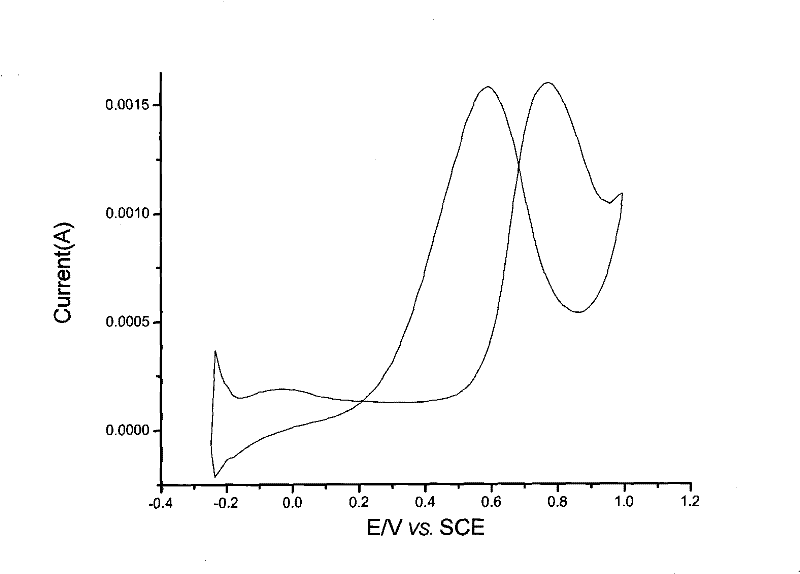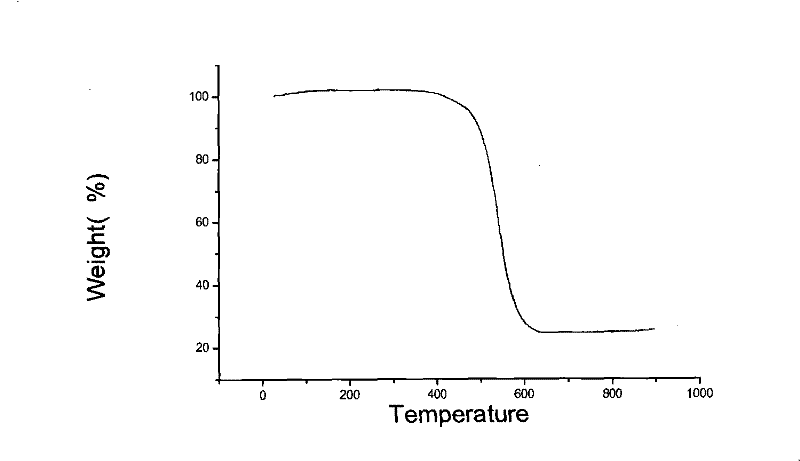Preparation method of PEMFC Pt-Ru/c catalyst
A proton exchange membrane, fuel cell technology, applied in battery electrodes, circuits, electrical components, etc., can solve problems such as difficult control of component distribution ratio, and achieve the effects of short preparation time and easy operation
- Summary
- Abstract
- Description
- Claims
- Application Information
AI Technical Summary
Problems solved by technology
Method used
Image
Examples
Embodiment 1
[0021] Take 0.2 grams of carbon carrier and place it in a flask filled with 10ml of sulfuric acid, heat it while stirring, and reflux the sulfuric acid. After 6-12 hours of treatment, filter and wash the carrier until it is neutral, and dry it for later use; configure a concentration of 20mmol / L Ruthenium chloride solution, 5ml of chloroplatinic acid solution with a concentration of 20mmol / L; 30ml of isopropanol, 25ml of cyclohexane, and 10ml of surfactant triton-100 were mixed and stirred for 30 minutes to form a transparent microemulsion system, and 20mmol / L was added 5 ml of ruthenium chloride of 1 L, and a small amount of n-butanol was added dropwise, placed in a microwave oven for intermittent microwave treatment (the total power of the microwave oven was 800w) after mixing evenly, utilized 10% power to heat for 20 seconds, heated four times, and then used 30 % power heating for 10 seconds, heating three times, every two heating intervals of 15 seconds, stirring; observe t...
Embodiment 2
[0023] Take 0.2 grams of carbon carrier and place it in a flask filled with 10ml of sulfuric acid, heat it while stirring, and reflux the nitric acid. After 6-12 hours of treatment, filter and wash the carrier until it is neutral, and dry it for later use; configure the concentration of 20mmol / L Ruthenium chloride solution, concentration are each 5ml of the chloroplatinic acid solution of 20mmol / L; With 40ml n-heptane, 0.35gCTAB (hexadecyltrimethylammonium bromide), mix and stir 30 minutes to form transparent microemulsion system, add Ruthenium chloride 5ml of 20mmol / L, and a small amount of n-butanol is added dropwise, is placed in the microwave oven after mixing uniformly and carries out intermittent microwave treatment (microwave oven total power is 800w), utilizes 10% power to heat 20 seconds, heats four times, again Heat at 30% power for 10 seconds, three times, stirring for fifteen seconds in between. It was observed that the microemulsion changed from light gray to ligh...
Embodiment 3
[0025] Take 0.2 grams of carbon carrier and place it in a flask filled with 10ml of sulfuric acid, heat it while stirring, and reflux the nitric acid. After 6-12 hours of treatment, filter and wash the carrier until it is neutral, and dry it for later use; configure the concentration of 20mmol / L Ruthenium chloride solution, 10ml of chloroplatinic acid solution with a concentration of 20mmol / L; 40ml of n-heptane and 10ml of surfactant triton-100 were mixed and stirred for 30 minutes to form a transparent microemulsion system, and 20mmol / L of ruthenium chloride was added 1ml, and a small amount of n-butanol was added dropwise, mixed evenly, placed in a microwave oven for intermittent microwave treatment (the total power of the microwave oven was 800w), heated for 20 seconds with 10% power, heated four times, and then heated with 30% power for 10 seconds, heat three times, stirring for fifteen seconds in between. It was observed that the microemulsion changed from light gray to l...
PUM
| Property | Measurement | Unit |
|---|---|---|
| particle diameter | aaaaa | aaaaa |
| particle diameter | aaaaa | aaaaa |
Abstract
Description
Claims
Application Information
 Login to View More
Login to View More - R&D
- Intellectual Property
- Life Sciences
- Materials
- Tech Scout
- Unparalleled Data Quality
- Higher Quality Content
- 60% Fewer Hallucinations
Browse by: Latest US Patents, China's latest patents, Technical Efficacy Thesaurus, Application Domain, Technology Topic, Popular Technical Reports.
© 2025 PatSnap. All rights reserved.Legal|Privacy policy|Modern Slavery Act Transparency Statement|Sitemap|About US| Contact US: help@patsnap.com



